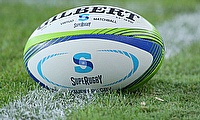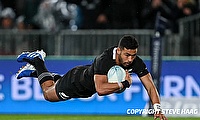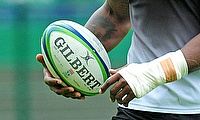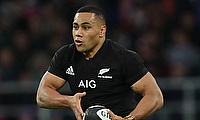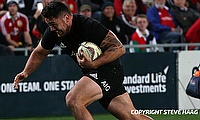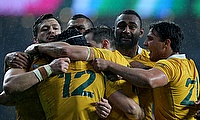The Crusaders and their growing influence
Ben Mercer dissects the tactics behind the Crusaders as they aim to reach the 2018 Super Rugby Final.
If you’ve watched or played rugby at any sort of organised level, you have seen the influence of the Crusaders who play the the Hurricanes in the Super Rugby semi-final tomorrow.
The Crusaders have an ethos and a style that brings them consistent success. Canterbury’s provincial team and the Crusaders Super Rugby team are closely intertwined with a production line of both players and coaches moving from one to the other.
Canterbury have won 12 National Provincial Championships, winning nine of the last ten titles while the Crusaders have won eight Super Rugby titles and have also been runners up 4 times.
With all the talk of culture permeating sport these days, Crusaders are one of the few teams that do live what they say. They are an Ajax or a Barcelona, producing their own players, coached by former players and with a consistent approach to the game.
I saw them live at Twickenham in the earthquake affected season of 2011 where they played every game away from home, just failing to win the title. The team was stacked with All Blacks and I suspect they could have beaten international sides.
The pack included the Franks brothers, Kieran Read and Richie McCaw, Brad Thorn and Sam Whitelock whilst the backs featured Dan Carter, Sonny Bill Williams, Israel Dagg and other top players like Andy Ellis, Sean Maitland and Zac Guildford. They beat the Sharks handsomely and it was probably the most exciting rugby I’ve seen played live.
The team now still has a lot of All Black representatives but contains far fewer ‘first pick’ or frontline internationals.
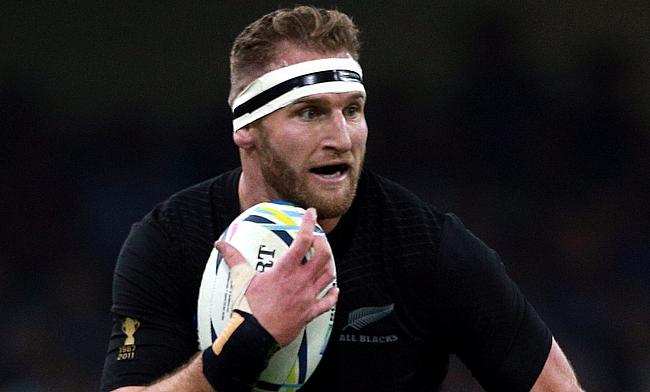
The backline is very young; Richie Mo'unga has just turned 24. Jack Goodhue is 22, George Bridge is 23, David Havili is 23. The forward pack contains more experience but because only a couple are All Blacks starters, they have huge motivation to keep improving. They are more a triumph of system and culture than previous vintages and could continue the success of the region for years to come.
The Crusaders play a very structured, but exciting style of rugby with the system used as a base from which to let the players improvise or use their individual strengths to make the difference. I’ll get nerdy about this in a minute but the basic tenets are to stretch the field and for every player to be able to handle the ball.
Their training reflects this as even gym sessions have the ball involved at all times, often involving a handling exercise supersetted with weights. The players always have a ball in their hands, flicking the ball to themselves or even simply dropping and catching the ball one-handed. This is atypical as most conditioners would not incorporate the ball in the gym or during the majority of conditioning drills.
Some of their key coaching points are lightning quick Ball at the ruck, develop the ability to carry to the line and hidden support angles. This is not rocket science. Every team would want to develop these qualities, but they are the bedrock of the team’s approach.
Ronan O’Gara has recently extended his contract with the franchise and says: “What I’ve seen here underlines that coaching is primarily about getting the very best out of the players, respecting them and fostering relationships with them. That’s the key.
“Every single one of them wants to get better. That isn’t always the case in professional sport. These lads are anything but box-tickers.”
The viewing public often assume that every professional athlete always wants to get better. The reality is that everyone would probably like to, but some maybe can’t be bothered one day a week.
Maybe that's 50% of the time. Maybe it’s 100% of the time and they are happy with what they’re doing. Actual buy in from every player and coach to improve every day is not the norm at all.
The system they play is commonly known as a 2-4-2. An in-depth explanation is here (https://www.rugbypass.com/news/crusaders-game-plan-revealed-secrets-2-4-2/), but basically it involves the props and locks filling the middle of the field with the hooker and one back row holding some width on one side and the other two back rows the other side.
This is interchangeable. You may see Sam Whitelock a bit wider, depending on the characteristics of the individual players and events in an actual match. The middle four can also split into two pods of two or a three and a one depending on circumstance.
Backs are stationed in behind to take a second man play off a forward or to take a ball directly off the inside back that goes behind all of the forwards.
Now most rugby teams will play if not a variant of this, they will include some of the principles. Any time a forward passes the ball behind a supporting forward to a back sweeping around, you can trace it back to Canterbury.
We did exactly this at Stade Rouennais and it caused problems. People would ‘forget’ the calls or fail to learn them in the first place and the skill level of some of the players wasn’t always good enough. To play this structure requires ball handling from all eight forwards and clarity of communication from the backs. Without these, allied to quality passing and combined with the bravery to take the ball to the line, play can look stilted and lateral.
When I was at Cornish Pirates I was expecting to play this structure - the previous management were Kiwi coaches who introduced this style and playing against the Pirates felt relentless, with runners arriving from all over the place and the field feeling stretched. The structure applied pressure to the opposition defence.
When I arrived, the structure had been scrapped and we were expected to get all seven backs together to play one phase, then let the forwards play two phases before having another go.
This involved a lot of pointless running and felt relentless for us, not for the opposition. This was reflected in us being the lowest try scorers in the Championship. One of the strengths of the 2-4-2 system is that it minimises running distance, particularly for the heavier players who can go up and down in the middle of the field.
Where is the system weak? It can leave your heaviest and slowest players clustered together in the middle of the field, ready to be exploited in the event of a turnover.
If the supremely athletic Hurricanes backs can create mismatches with these guys and get offloads then they could defy history and win in Christchurch. Even if they do though, you can guarantee that you’ll see more of not only this Crusaders team, but their influence on world rugby.


